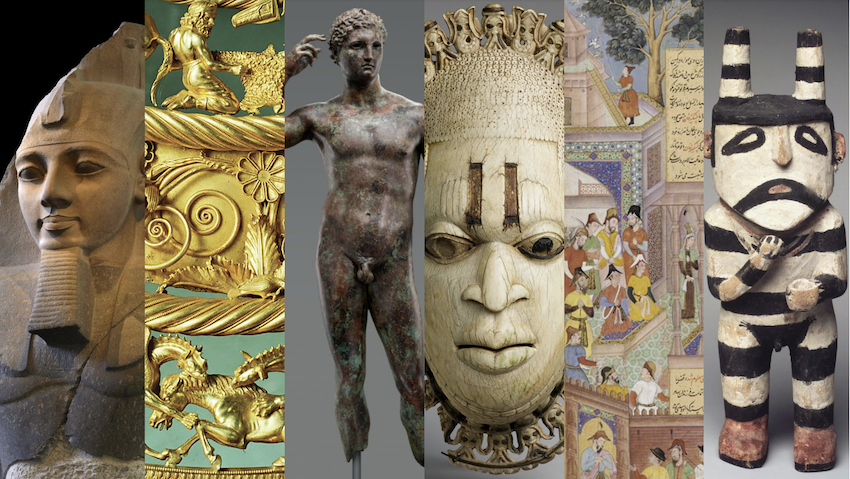THE COMMITTEE FOR CULTURAL POLICY, INC.
Post Office Box 4881, Santa Fe, NM 87502
December 2022
Dear Friends,
The Committee for Cultural Policy is a small but active think tank established in 2011 to strengthen the voice of art museums and collectors in the public debate on arts policy.
What do we do? We educate, by providing free global access to our in-depth publications on cultural policy, including a series on global heritage law in collaboration with UK nonprofit Trust Law. Our online journal, Cultural Property News, which reaches 10,000 museum professionals, collectors, art market participants, and academics, has published more than 400 articles on cultural heritage and art law in the last seven years.
We advocate, by testifying on behalf of the interests of art museums and the supporting public before US government agencies and at international conferences.
We champion the cultural property interests of ethnic minorities subject to hostile regimes before Congress and US agencies, by providing legal support for U.S. minority and diaspora organizations.
This year we are undertaking a major book publication project covering the drastic changes to public policy on cultural heritage and its effects on museums and the circulation of art worldwide.
Our voice is critical. Your generous support will enable us to continue our important work.
Thank you for your consideration and your support.
Sincerely,
Gary Vikan
President, Committee for Cultural Policy
Cultural Property News, Newsletter & Social Media
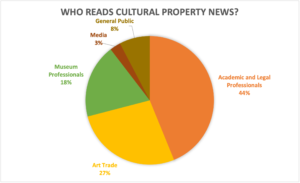
The Committee for Cultural Policy brings a public museum and private collector focus to the U.S. and international dialog on cultural heritage. Our bi-monthly Newsletter continues to deliver the latest news on art and cultural heritage free to readers everywhere.
There are 10,000 current subscribers to the Cultural Property Newsletter and over 400 articles on our no-firewall website culturalpropertynews.org, from ‘shorts’ to 5,000+ word feature and investigative articles and major reports on art and policy from around the world. Readers can also reach and share our work via Twitter and our Instagram page.
Here are just some of Cultural Property News Articles in 2022…

Ceremonial object found with the Llullaillaco mummies, Museo de Arqueologia de Alta Montana de Salta, Secretaria de Cultura, Gobierno de Salta.
The Lullullaillco Mummies
Moai on Easter Island Damages by Fire
UNESCO Model Provisions Could End Most Global Trade
Putin Using Martial Law to Legitimate Ukraine Art Looting
Restitution Study Group Files Suit to Stop Smithsonian’s Benin Bronze Returns, and Where will Benin bronzes go? Nigerian government, Edo Museum or Oba?
Caucasus Heritage Watch: Azerbaijan is Destroying Armenian Heritage
ICOM Condemns Russia’s Destruction of Ukrainian Heritage
Repatriations: Getty Sirens, Cambodian Sculptures, Jewish Coin, Nepal Stele
UK Charity Act Opens Door to Restitutions
J’accuse! Georges Lotfi’s Dramatic Letter to Bogdanos’ Antiquities Trafficking Unit
Climate Activists Glue Themselves to Masterpieces.
Russia’s War Against Ukrainian Culture
Briton Released – Yale & Indian Artifacts – Jewish Manuscript – Gentileschi Seized
Traitor, Survivor, Icon: The Legacy of La Malinche
Hagia Sophia Suffers Serious Damage: Walls Peeled and Marble Tiles Shattered
5 Native Nations Will Manage Bears Ears with Feds
Only in New Mexico: The Hermit of Hermit’s Peak and a Jewish Tribal Chief
Belgian Blunder: Government Sells Stolen Ife Head for €240
Sacre bleu! Former Louvre president charged in antiquities trafficking case.
Cultural Heritage Predation in Iraq – Sectarian appropriation of Iraq’s past
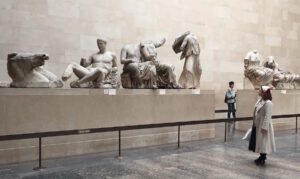
The Parthenon Marbles at the British Museum. 2017. Cultural Property News.
Losing the Parthenon Marbles: History, Passion, and Possession
Mes Aynak: Dark Days for Afghanistan’s Buddhist Heritage
“Who ordered the borscht?” When a State Steals Culture, Others Pay the Bill.
Egypt’s Antiquities Authority Seizes Geniza from Jewish Cemetery
EU Parliament Resolution Condemns Azerbaijan’s Erasure of Armenian History
CINOA-Art Market Demands Fundamental Review of Law Making
Bamiyan: What Lasted for 1500 Years Will be Gone in Ten
U.S. Treasury Report: Findings on Money Laundering and Terror Finance in Art Trade
Citizen Activists Want Nepalese Art Back
Vance Caps Career: Steinhardt Gives Up $70 Million in Antiquities
Plus “The Careful Collector,” a Popular Monthly Series by Peter K. Tompa, also included in the Museum Trustee Association Newsletter
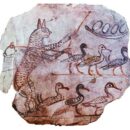
A scene from a fable, Ancient Egyptian, 19th dynasty. Egyptian Museum, Cairo.
Don’t Import Buyer’s Remorse
Great Catsby is Life of the Party
Not as Rare as You Might Think!
The Riddle of the Native American Eagle Headdress
What’s it Worth? Friends Find Value in Family Heirlooms
Why does a French auction house want to know so much about me?
Fakes and Alterations: Hana Hunts for Vintage Uke with Few Strings Attached
What to do with Your Ivory Keyed Piano?
Will my African Art be Repatriated as Reparations for a Colonial Past?
CCP domestic advocacy 2022-2023
Cultural Property Implementation Act Import Restrictions
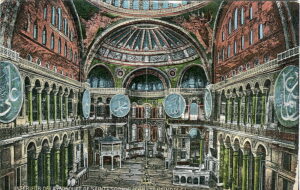
Postcard, undated ( ca.1914 ). Title: “Interior of the mosque of Saint Sophia ( Constantinople ) 13 October 2008, private collection of Wolfgang Sauber (Xenophon), public domain.
National ownership claims for all antiquities are driving U.S. and European cultural policy. At the same time, policymakers have ignored important causes of heritage loss: government dysfunction, lack of funding for law enforcement, site protection against illegal development and climate change. The State Department continues to sign and expand MOUs with States that are notorious for human rights abuse and corruption.
The U.S. now has 30 MOUs with foreign states: Afghanistan, Albania, Algeria, Belize, Bolivia, Bulgaria, Cambodia, Chile, China, Colombia, Costa Rica, Cyprus, Ecuador, Egypt, El Salvador, Greece, Guatemala, Honduras, Italy, Jordan, Libya, Mali, Morocco, Nigeria, Peru, Tunisia, Turkey, and Yemen. Iraq (2008) and Syria (2016) are subject to similar import restrictions through legislative “emergency actions.” The pace and scope of MOUs has accelerated. Half of the 30 were added in the last 5 years and import restrictions commonly cover objects from 100,000 BC to the early 20th C.
In 2023: CCP will present testimony on scheduled renewals with Algeria, Bulgaria, Cambodia, Honduras, and China. Hearings have just been scheduled in January 2023 for new MOUs with Uzbekistan and North Macedonia.

Gamila and Reuven Falah with their daughter Yola. Tripoli, Libya, circa 1932. Beth Hatefutsoth – Archive, The Nahum Goldmann Museum of the Jewish Diaspora.
In 2022: CCP worked together with representatives from key religious and minority groups in the U.S. in voicing objections to the State Department’s repeated signing of MOUs with authoritarian Middle Eastern and North African (MENA) governments.
At a July 26, 2022 State Department hearing on the Libyan MOU, Rabbi Eric Fusfield, deputy director of B’nai B’rith International stated:
“…no issue is of greater importance to the Jewish community than the rights of the nearly one million Jewish refugees from the Middle East and North Africa. These refugee populations have been largely ignored by the international community, despite their centuries-long history in Arab and Muslim countries prior to their forced expulsion in the wake of the Middle East conflict.”
“This MOU legitimizes the confiscation of Jewish property seized by Libya’s government when Jews were forced from the country. It is therefore necessary to ask why the US government would put faith in Libya, a regime that has shown blatant contempt for the rights of Jews and other minorities, to act as the protector of the heritage of minority and exiled peoples.”
In 2023: We will partner with other organizations to support legislation to ensure that import restrictions under the Cultural Property Implementation Act reflect the concerns of displaced religious and ethnic minorities in the MENA region, Turkey, Armenia, Central Asia and China.
FINCEN & Treasury Regulations
In 2020, a bill requiring antiquities dealers to follow the anti-money laundering provisions of the Bank Secrecy Act to report to the Treasury Department’s Financial Crimes Enforcement Network, was included in the National Defense Authorization Act, making antiquities dealers subject to many of the same reporting rules as banks. Congress suggested that the regulations could vary by the size of the business, the size of the transaction, the location of the transaction—and how the dealer would identify the seller or buyer. A U.S. Department of the Treasury Report issued at the beginning of 2022 found that the art trade in general posed little threat of money laundering compared to real estate, trusts, and other ways of transferring assets. We are still waiting to learn how the final FINCEN rules will apply. In 2022, we continued to provide research to ensure that regulators and legislators have accurate data on the art trade in order to promote a responsible, lawful circulation of art.
CCP international advocacy 2022-2023
The Committee for Cultural Policy works to ensure that international organizations adopt realistic, enforceable models for a responsible, lawful art market. We encourage the building of safeguards for the interests of religious and ethnic minorities in foreign nations and in the diaspora. CCP participated in UNESCO hearings and submitted extensive testimony on 2022 draft Model Provisions. We alerted key stakeholders to this attempt to replace the 1970 Convention’s aspirations for global circulation of art with an exclusively national-ownership focus and encouraged diaspora and minority organizations to submit testimony as well.
Among other serious concerns, the Model Provisions would:
- Violate due process by requiring States adjudicating claims to cultural property to apply foreign law even where it is inconsistent with the law of the jurisdiction.
- Grant extraterritorial powers to art source countries to claim art and artifacts.
- Adopt grossly overbroad description of “cultural property” as whatever the State wants to control, not important or significant objects.
- Place indigenous cultural heritage in exclusive control of the State, not the communities themselves.
- Deny legal access to long-circulated art and artifacts and multiple objects such as coins.
- Ignore “independent judgement” provision in U.S. legislation, the CPIA.
CCP Publications:
Global Art and Heritage Law Series & Art and Heritage Law Reports
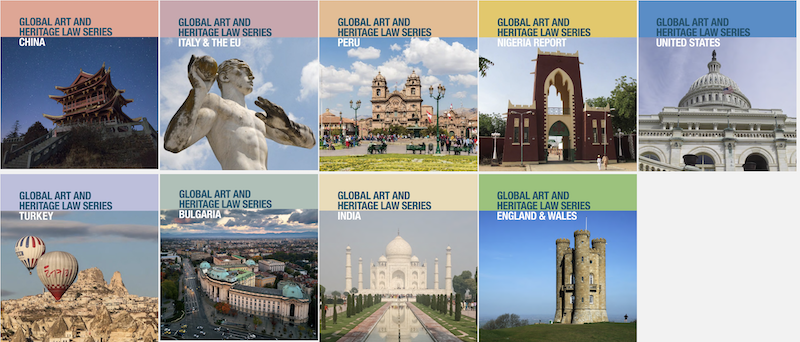
CCP’s TrustLaw project produced nine lengthy, independent research papers on cultural property laws with legal teams from China, Nigeria, Peru, the United Kingdom, India, Turkey, Italy, Bulgaria and the USA. In 2023, we will update the United States volume to cover changes in law and policy including FINCEN and AML, MOU expansions, and significant changes to laws on Native American art.
We are currently researching law, enforcement, and public policy inside Afghanistan. In 2023, we will add a new volume on Afghanistan & Pakistan to the series.
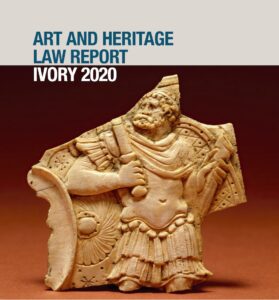
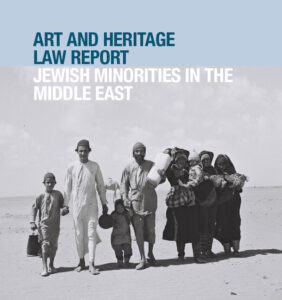
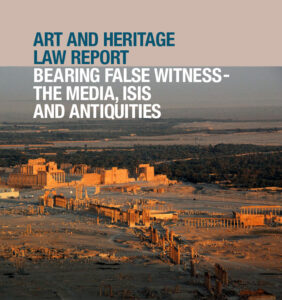 CCP’s Art and Heritage Law Reports address key issues in politics and media, human rights, and environmental policy. The series includes Ivory 2020, by Olivia Franklin, which provides an overview on the international framework on ivory, from ancient to antique and modern, in order to provide guidance on what can and cannot be imported, exported, traded or inherited. Jewish Minorities in the Middle East, by Katherine Brennan and Kate Fitz Gibbon discusses the pervasive pattern of abuse of both human and property rights of religious and ethnic minorities in the Middle East. Bearing False Witness: The Media, ISIS and Antiquities, 2017, by Katherine Brennan and Kate Fitz Gibbon examines the reflexive repetition of a false narrative about a multi-billion-dollar illegal market.
CCP’s Art and Heritage Law Reports address key issues in politics and media, human rights, and environmental policy. The series includes Ivory 2020, by Olivia Franklin, which provides an overview on the international framework on ivory, from ancient to antique and modern, in order to provide guidance on what can and cannot be imported, exported, traded or inherited. Jewish Minorities in the Middle East, by Katherine Brennan and Kate Fitz Gibbon discusses the pervasive pattern of abuse of both human and property rights of religious and ethnic minorities in the Middle East. Bearing False Witness: The Media, ISIS and Antiquities, 2017, by Katherine Brennan and Kate Fitz Gibbon examines the reflexive repetition of a false narrative about a multi-billion-dollar illegal market.
CCP Budget & Funding 2022-2023
CCP is incredibly productive for its cost. We use less than 2% for fundraising, all by internal staff and volunteers. Our funds are used directly each year for delivering testimony in domestic and international venues, research and writing, and publishing Cultural Property News website content, the CPN Newsletter, Global Art & Heritage Law Series and Art & Heritage Law reports.
How can you help? Donate!

Girls playing music in East Turkestan, early 20th C. Svesnska Missions för Bundet.
Visit our online donation page.
Send your check to:
Committee for Cultural Policy
PO Box 4881
Santa Fe, NM 87502
You can contact us directly for more donation information.
Contact Kate Fitz Gibbon, Executive director
505.216.9369, [email protected]
The Committee for Cultural Policy Inc. was established in 2011 as a 501(c)(3) non-profit public charity. Your gift may qualify as a charitable deduction for federal income tax purposes.
Please consult with your tax adviser or the IRS to determine whether your contribution is deductible under current law.
